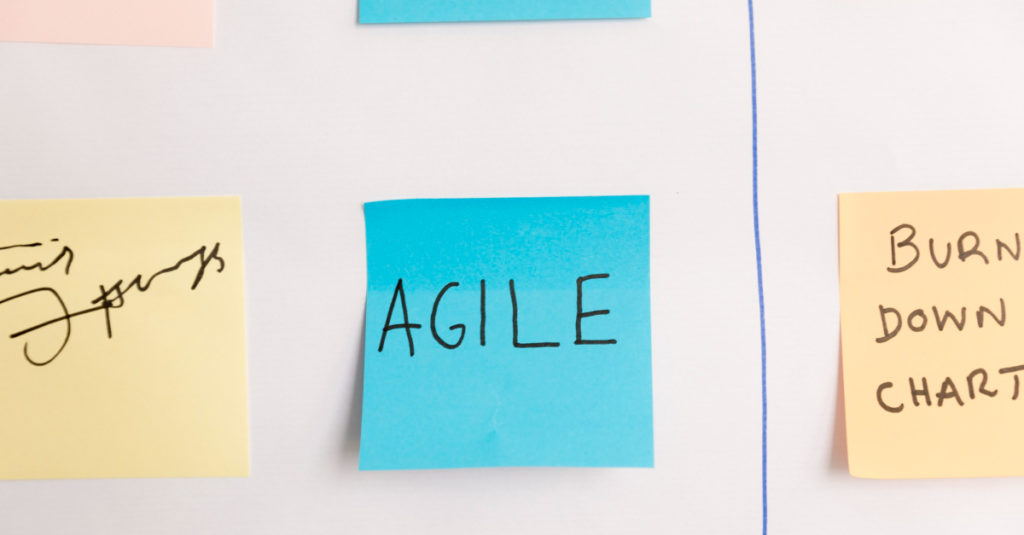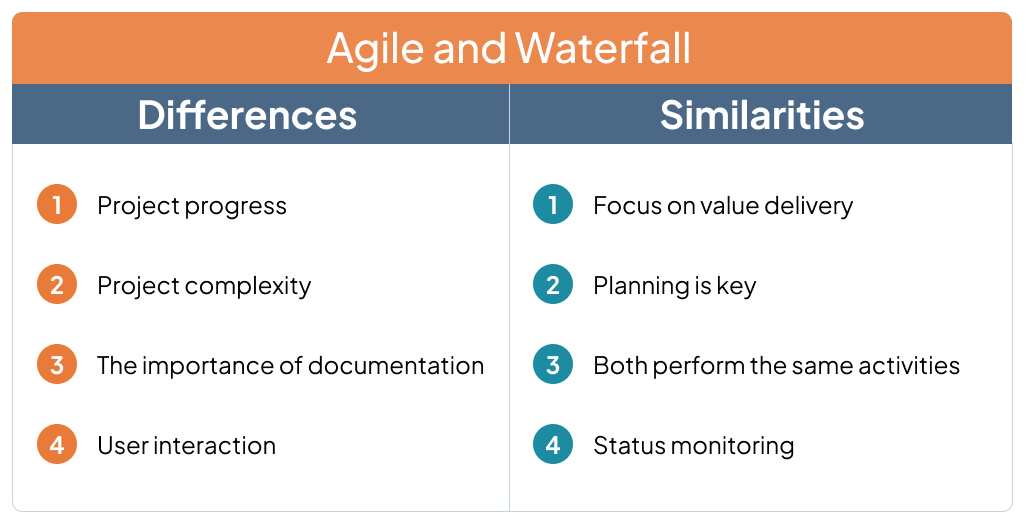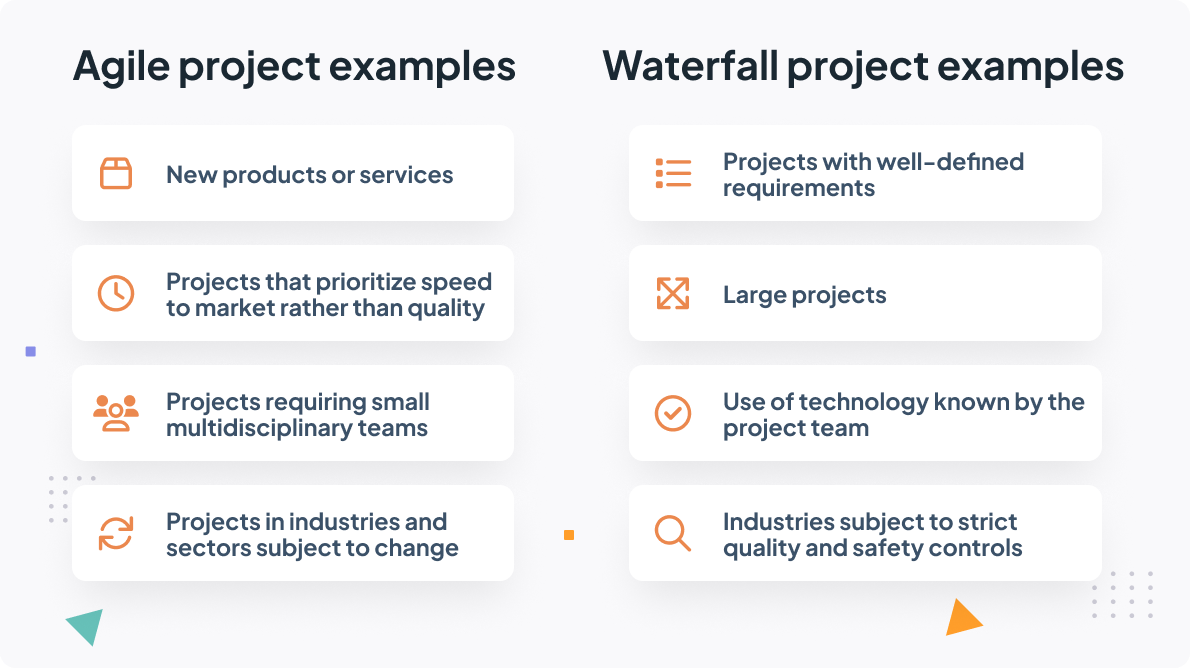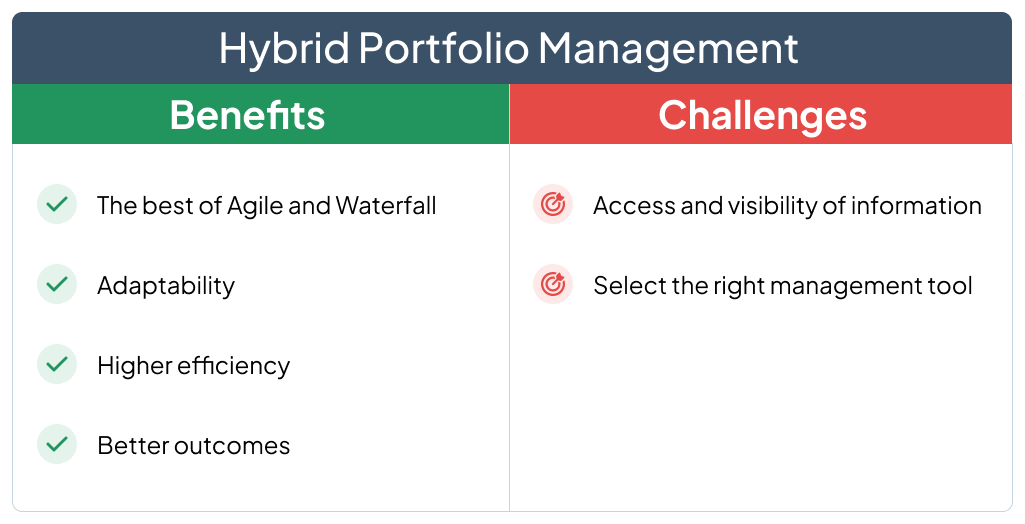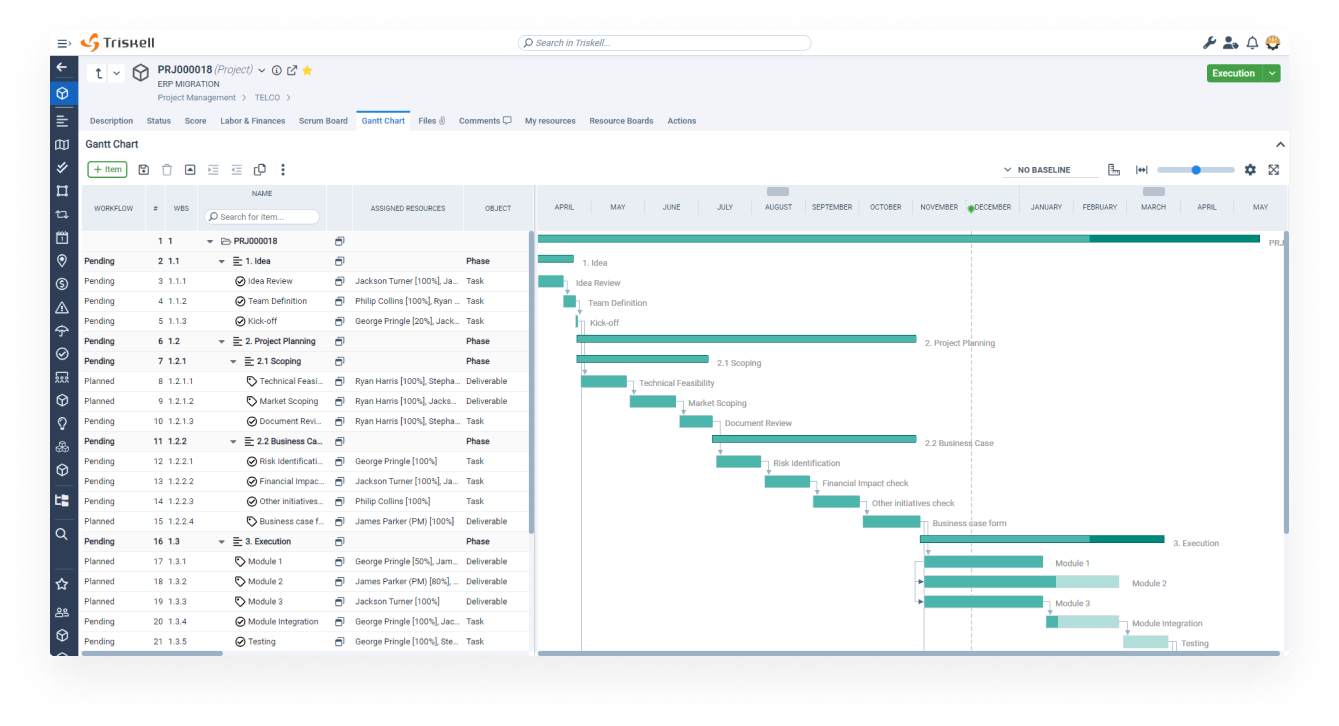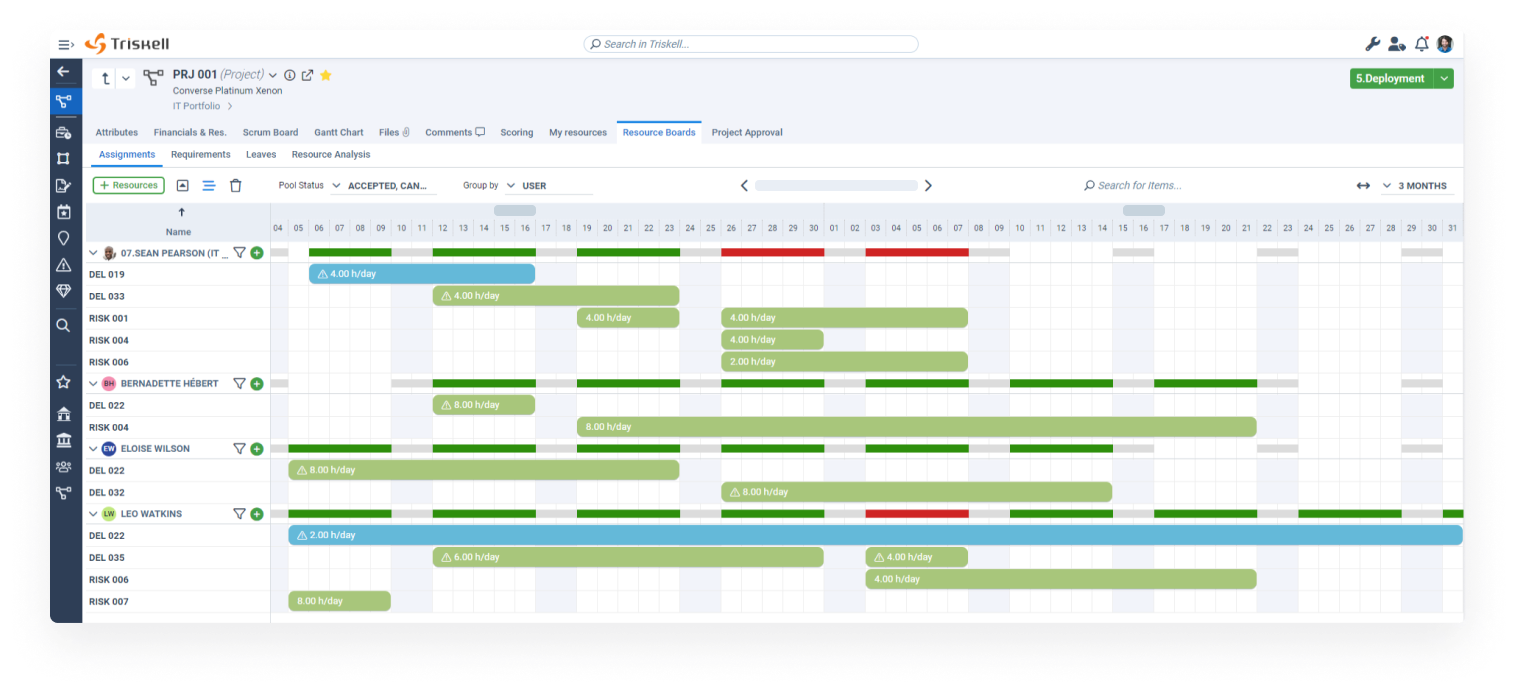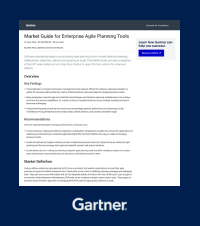Agile vs Waterfall vs Hybrid project management: which approach should your PMO use?
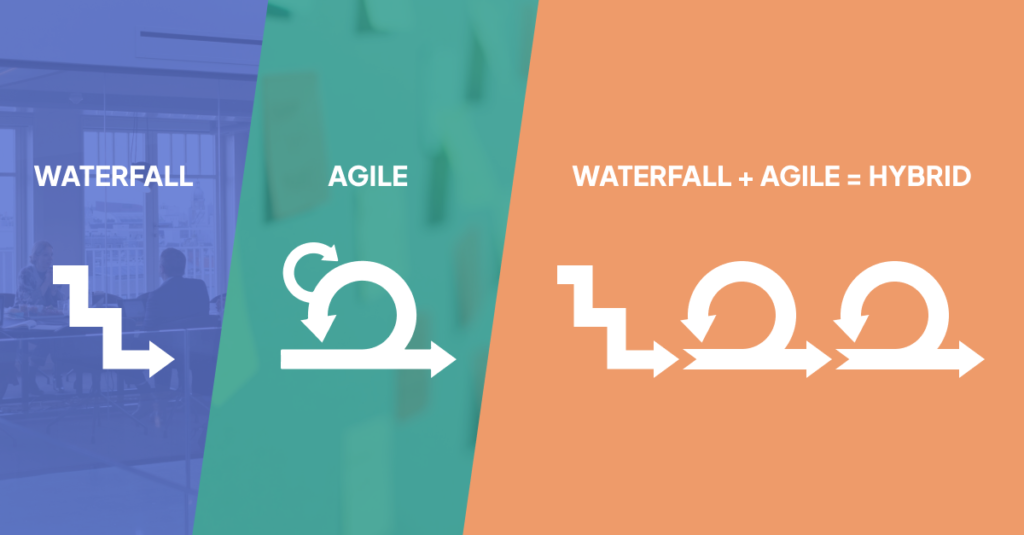
Agile, waterfall or hybrid project management: what approach should the PMO take for project and product portfolio management? Society and businesses have evolved. Response times for new products and services demanded by users have speeded up considerably. And ways of working have inevitably had to adapt to this new and changing environment.
Hence, the approach to portfolio management may change not only from one organisation to another. Within the same portfolio, different projects and programs may require a different management approach. As a result, more and more organisations are adopting a hybrid approach to project portfolio management, allowing them to combine the best of agile methodologies with more traditional approaches to deliver value.
In this post, we will define what Hybrid Portfolio Management is, what elements it takes from agile and traditional approaches, and the challenges and benefits of adopting this method of working.
TABLE OF CONTENTS
- The eternal debate: Waterfall or Agile project management?
- Waterfall vs Agile: differences and similarities
- What is a Hybrid Portfolio Management? Getting the best of Agile and Waterfall
- Agile vs Waterfall vs Hybrid project management: when and how to apply them in your PPM processes?
- Benefits of Hybrid Portfolio Management: mixing the best of Agile and Waterfall.
- Challenges of Hybrid Portfolio Management.
- The importance of having a PPM software with Hybrid Portfolio Management capabilities.
- Conclusion: Triskell, the PPM software with Hybrid Portfolio Management functionalities that PMOs need.
The eternal debate: Waterfall or Agile project management?
After the release of the Agile Manifesto in 2001, and the rise of the different agile frameworks (Kanban, Scrum, Lean, etc.), a new range of possibilities emerged overnight when it came to project and product portfolio management. After decades of using rigid and structured management work approaches such as Waterfall, development and IT teams realised that value delivery could be accelerated by following more iterative approaches.
And which approach is better: Agile or Waterfall? As the use of agile methodologies spread beyond IT and began to impact other areas such as software development, marketing and operations, this debate has intensified. It is very common to see how some organisations are resorting to agile methodologies to manage their project portfolio and get swept up in the “Agile” trend, without stopping to think about whether or not it is the approach they really need.
Clinging to a unique management methodology is a mistake
See the Triskell platform in action in a personal demo
As in most aspects of life, not everything is black or white. Clinging to a unique management methodology because it is trendy or because it is the one that has traditionally been used is a mistake. More and more organisations are understanding this and have decided to opt for hybrid approaches to Project Portfolio Management.
But before delving into the concept of Hybrid Portfolio Management, let’s first define the Waterfall and Agile methodologies and their differences and similarities.
The Waterfall approach to Project, Program and Portfolio Management
Invented in 1970 by Winston Royce, the Waterfall methodology has been the most widespread management approach to project, program and portfolio management. With a long history behind it, it’s a methodology that is easy to understand and apply.
Waterfall is a linear management approach in which each project phase is clearly separated from the others. This means that projects cannot move to the next phase until the current stage of the project has been successfully completed.
Clinging to a unique management methodology is a mistake
It is therefore a very rigid management approach, where there is very little room for change or error, especially in the early stages of projects. Therefore, projects applying this methodology must be documented in detail in order to be able to track the work carried out at each stage.
An introduction to Agile Portfolio Management
On the other hand, we have the different agile methodologies that have been emerging over the last 20 years. These, unlike traditional work approaches, are iterative. These methodologies are therefore much less rigid, and in fact it is quite common that project phases overlap with each other.
As the Agile Manifesto states, the guiding principles that govern agile methodologies contradict traditional approaches. And that’s because:
- Agile prioritizes interactions and individuals over processes and tools. Agile methodologies are iterative mainly because of the constant interaction with customers and users throughout the project lifecycle.
- Agile makes documentation processes less relevant: While traditional approaches focus on exhaustive documentation as the main raison d’être, Agile prioritises delivering value in the shortest possible time from a working software or minimum viable product (MVP).
- It fosters collaboration with the customer: this collaboration takes place in all project phases, from the ideation of the project or product, to the testing phase and its launch on the market.
- Agile does not fear change: Agile methodologies are all about adaptability and responsiveness to change rather than sticking to a defined plan in the early stages of the project.
Agile methodologies have contributed to the improvement of Project Portfolio Management. And this has been done by speeding up delivery times, and ostensibly improving the quality of the products and services delivered thanks to the involvement of users and customers throughout the process.
For more information on what Agile Portfolio Management is, we recommend that you read this article:
Waterfall vs Agile project management: differences and similarities
Agile and Waterfall. Which one to choose? While their approaches differ, both Waterfall and Agile share a common goal: reaching the project finish line. Yet, the path they take and the tools they utilize are where the magic unfolds. Delving deeper into their unique characteristics will equip you to decide which method best suits your next project adventure.
Differences between Agile and Waterfall
As you can see, there are several areas where the differences between the two approaches are quite evident. These are as follows:
- Project progress: Waterfall is a linear management approach, in which no progress is made to the next phase until the tasks being worked on are successfully completed. Agile, on the other hand, is iterative, and some project phases may overlap with each other (e.g. development and testing phases).
- Project complexity: Waterfall is best suited to initiatives whose requirements and scope can be clearly defined in the planning phase. In contrast, agile methodologies are better suited to initiatives whose scope and requirements can evolve.
- The importance of documentation: In Agile, documentation is most important when planning and retrospectively reviewing each sprint in the development phase of the projects. However, in more traditional approaches, the documentation process is carried out comprehensively at all stages of the project.
- User interaction: feedback from users and customers occurs throughout the entire project lifecycle when working with Agile. However, in the waterfall, this feedback only occurs after project milestones and, above all, when the project outcomes to be delivered have already been completed.
Similarities between Agile and Waterfall
Although the differences between the two approaches are very striking, it is also important to highlight their similarities, especially in order to understand why both methodologies can coexist when talking about project and product portfolio management.
These are the main similarities between Waterfall and Agile methodologies:
- Both focus on value delivery: Whether for project management or the development of software or new products and services, agile and waterfall methodologies have the same goal: the delivery of value, although the path they follow to achieve it is quite different.
- Planning is key: Both approaches put a strong emphasis on planning, albeit at different stages of the life cycle of projects and programmes. While in Waterfall this planning takes place mainly in the initial phases of the project, with Agile it takes place before each sprint of the execution and/or development phase of the projects.
- Both perform mostly the same activities: strategic planning, Resource Management, Financial Management or Demand Management are activities with the same importance in Agile as in Waterfall management approach.
- Status monitoring and tracking: Monitoring and tracking the status of project portfolios is equally relevant in both approaches. The only difference is that, depending on the project, this activity takes place at different times. For example, projects with a more traditional approach are monitored throughout the project plan, while more agile projects place special emphasis on tracking progress at each sprint.
What is Hybrid Portfolio Management? Getting the best of Agile and Waterfall
Agile and Waterfall have more in common than you might initially think. So why do most organisations insist on following one approach or the other when managing their project portfolios? Why not go for a hybrid approach?
Project portfolio management has become much more complex in recent years. PMOs have to manage an increasing number of projects. Inevitably, each project has its own particularities, and some projects will need to be managed following agile practices and others using more traditional methodologies. Others, on the other hand, can be managed following a hybrid approach, where for certain phases agile methodologies can be followed, and for others a more traditional management approach can be adopted.
So what is hybrid portfolio management? As the term ‘hybrid’ itself indicates, it is the combination of 2 or more methodologies for project portfolio management to create a new framework.
When we talk about combining methodologies, we don’t just mean mixing Waterfall with the different Agile frameworks. Other ways of working such as Phase-Gate, PRINCE2, PMBOK or Six Sigma can be included in this equation.
At the end of the day, the objective of combining different methodologies and adopting a hybrid approach is that portfolio management gains in flexibility and adaptability to generate value in the shortest possible time while facilitating the achievement of the organization’s strategic objectives.
Agile vs Waterfall vs Hybrid project management: when and how to apply them in your PPM processes?
Many companies, while claiming to be agile, are not agile at all. In many cases, Agile principles can only be applied in certain areas of the organization or in certain areas of management. In order to align strategic planning and execution, in most of the cases it is necessary that agile and traditional approaches coexist.
Organizations should be receptive to using an agile, waterfall or hybrid approach in solving the various governance and management challenges. Here are some examples of scenarios that clarify which management approach is most appropriate for each situation.
Agile project management use cases
Agile is increasingly becoming the preferred approach for project, program and portfolio management. But that does not mean that agility will work in all cases. These are some examples where it is recommended to opt for agile approaches:
- Initiatives where something completely new is being created (i.e., a product, service, process, etc.).
- Projects and/or products where priority is given to speed to market rather than quality.
- Projects that require small, multi-disciplinary teams to be completed that need to think and operate outside of established organizational processes.
- Initiatives in industries or sectors subject to constant change and the introduction of new products and services to the market on a regular basis.
Examples of the Waterfall project management approach
On the other hand, these are some examples where the PMO should encourage the use of waterfall methodologies:
- When projects and/or programs are unambiguous, with well-defined requirements from the very beginning, which are not likely to be subject to change once the project is underway.
- Large projects, where the project team is composed of a large number of people.
- Projects and/or programs that for their development require the use of a technology that is well known by the members of the project team.
- Initiatives in industries or work environments that require strict quality and safety protocols.
Examples of Hybrid project management approaches
As the volume of projects to be managed tends to grow, it is more and more necessary to adopt different work approaches not only for the management of each project in particular, but for portfolio management as well.
Hybrid approaches help PMOs to manage product and project portfolios in a more adaptive way, accelerating delivery times without sacrificing the requirements and objectives established for each portfolio.
An example of how to combine Agile and Waterfall in a project portfolio would be as follows:
- The planning phase of the different initiatives would be carried out following the principles of Waterfall. This means that each project and program will only be able to move on to the next phase once the requirements, deliverables, budgets and delivery dates for each initiative have been established and validated by all stakeholders.
- Task assignment, management and monitoring during the development phase of projects and programs would be done following agile principles. Here, teams will be able to allocate resources and execute tasks with the help of some of the most commonly used tools and functionalities in agile environments, such as Kanban or Scrum boards.
- For the testing and closing phases of the project, depending on the type of project, one management approach or another may be chosen. For example, for a program focused on new product development, it may be a better fit to adopt a more Agile approach in this phase, while for a Civil Engineering project, Waterfall may be a better fit.
Benefits of Hybrid Portfolio Management: mixing the best of Agile and Waterfall
More and more PMOs are implementing hybrid approaches to their project portfolio management processes because of all the advantages they bring to the organization. Here are some of the benefits of Hybrid Project Portfolio Management:
- A combination of the best of the Agile and Waterfall worlds: you will mix different project management methodologies in your project portfolios. You’ll be able to add the planning of more traditional management methodologies to your more agile initiatives and vice versa, depending on your needs.
- Adaptability: your organization will be more responsive to the different challenges that will arise when planning, implementing and monitoring project portfolios.
- Increased efficiency: by being able to choose the most appropriate approach for each project, you will avoid many of the problems and bottlenecks that often occur when managing the resources, budgets or schedules of your programs and portfolios.
- Better outcomes: Hybrid portfolio management will make your organization more competitive by delivering higher quality products and services in less time, which in turn will facilitate the achievement of your strategic objectives.
- Continuous improvement: you will refine your PPM processes over time as you experiment with this hybrid approach in your project portfolios. Your decision-making processes will become more and more accurate, which in turn will have an impact on the efficiency and productivity of the organization.
Challenges of Hybrid Portfolio Management
On the other hand, to successfully combine Agile, Waterfall and hybrid approaches, organisations will need to address the challenges outlined below:
- Access and visibility of information: breaking down information silos is key to successfully implementing a hybrid approach to project management. The different sources of information and knowledge must be accessible to all stakeholders. For this purpose, processes and tools should be put in place to facilitate access to and exchange of information.
- Choosing the right management tools: traditional PPM solutions are not flexible enough to be able to combine and select between Agile or Waterfall approaches. It will be necessary to renew the suite of tools with which you normally manage your project portfolio and opt for new PPM tools that can adapt and evolve according to your needs.
The importance of having a PPM software with Hybrid Portfolio Management capabilities
As mentioned above, traditional PPM software cannot cope with the Hybrid Portfolio Management challenges. Within the same portfolio, there will be initiatives that lend themselves to constant and frequent iterations with customers. At the same time, there will be other longer-term projects where planning and proper documentation will prevail over speedy delivery of results. And many PPM tools are not prepared to successfully address this dichotomy.
Hybrid portfolio management requires PPM software with functionality for both agile and traditional project management. It will provide organizations with the adaptability and flexibility to choose the appropriate approach for each of their projects, programs, products or portfolios.
These are some of the functionalities that any PPM software must have in order to manage project portfolios with a hybrid approach:
- Kanban Boards: They are useful for the organization’s Agile teams to organize their sprints and task workflows.
- Roadmaps to visualize the status of each of the initiatives being worked on.
- Gantt charts: It is a basic tool for both Waterfall and hybrid approaches, as it allows you to list tasks and visualize projects and programs as a whole.
- Scoring: They are necessary to prioritize the different initiatives of the organization, and thus help you to improve your decision making on the work approach that can best adapt to each initiative.
- Scrum boards: They are useful for Scrum teams in your organization to see their workload and manage the development of the projects or products they are working on from start to finish.
- Resource Management and Capacity Planning capabilities: plan the capacity of the entire organization and allocate resources efficiently to the different projects according to the work methodology to be followed in each one of them.
- Timesheets: use them to record the time your resources spend on each of the initiatives you are working on.
- Financial Management capabilities: it is necessary to have a PPM software with which you can plan and manage in an agile way the budgets and costs of all your project portfolios.
- Workflows: Enable your teams to set up customizable workflows for each scenario, regardless of whether they are working with agile, traditional or hybrid methodologies.
- Integrations: Integrations with both agile tools and environments as well as with other more traditional Project Management solutions, thus making PPM software the only source of information.
Conclusion: Triskell, the PPM software with Hybrid Portfolio Management functionalities that PMOs need
Waterfall, Agile, Lean, Scrum, Phase-Gate… These and many other project management methodologies have proven to be effective. So why shouldn’t PMOs take all of them into account when managing their project portfolios? Why are many still stuck in the past and using traditional PPM tools that are not flexible enough to combine different management methodologies?
Triskell is the most flexible PPM software on the market, allowing you to select the most appropriate management approach for each case. Whether it is a project, program, portfolio, initiative or demand request, Triskell’s platform has all the necessary functionalities to adapt to any management approach.
Request a demo of Triskell Software
Triskell meets all the requirements for your organization’s PMO to take a step forward in aligning your project portfolio with strategic planning.
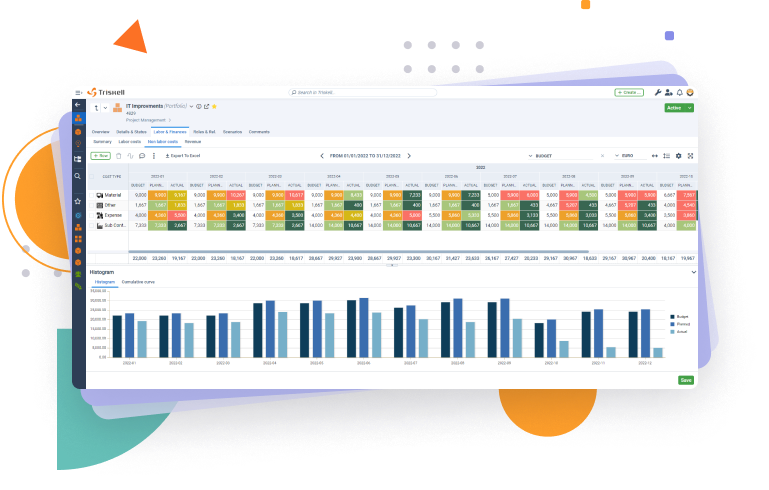
FAQs about Agile vs Waterfall vs Hybrid project management
When should I use Agile vs Waterfall?
- Agile: Choose Agile for projects with evolving requirements, where flexibility and rapid feedback are crucial. This is often ideal for software development, creative projects, or situations with a high degree of uncertainty.
- Waterfall: Opt for Waterfall when requirements are clearly defined upfront, and there’s little chance of significant changes. This is suitable for well-established projects with a focus on risk management and control, such as construction or large infrastructure endeavors.
What about project complexity? How does that play in?
- Agile: Agile excels in handling complex projects with constantly changing requirements. It allows for iterative development and course correction throughout the project lifecycle.
- Waterfall: Waterfall works best for projects with well-defined scope and complexity from the beginning. The structured approach minimizes surprises later in the development process.
Is there a middle ground? Can I combine Agile and Waterfall?
Yes, a hybrid approach is possible! This blends elements of both Agile and Waterfall depending on the project’s specific needs. For instance, you might use a Waterfall approach for the initial planning phase with well-defined requirements, then switch to Agile sprints for the development stage where flexibility is needed.
How does Agile handle documentation compared to Waterfall?
- Agile: Documentation in Agile is focused on sprint planning and retrospective reviews. It’s concise and emphasizes clear communication within the development team.
- Waterfall: Waterfall involves comprehensive documentation at every stage. This ensures detailed requirements capture and serves as a reference point throughout the project.
Related Content

Why the CIO needs a PMO approach
Unlock business success: discover why the CIO must embrace a PMO approach! to elevate efficiency and boost productivity.

Lean Budgeting for Agile Portfolios: A Comprehensive Guide
Lean Budgeting: the financial revolution for Agile portfolios. Discover how to streamline project financing and optimize value delivery.

Implementing SAFe with a 7-step roadmap
Do you want to scale Agile at the enterprise level and don’t know where to start? We solve your doubts by explaining the steps to implement SAFe.
